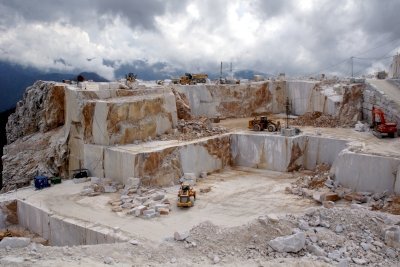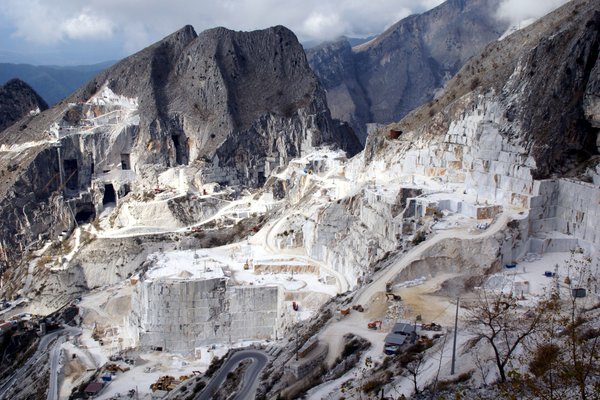Italy
The Marble Basin of Carrara
The Marble Basin of Carrara is the most productive basin of white marble in the world. The large scale exploitation of Carrara quarries began in the 1st century A.C. by the Romans. The area in the mineral natural park preserves excavations from the Roman age, the post-Medieval age and the pre-industrial era, including the the largest and most articulated Roman quarry of Italy, or even of the world, in the neighbourhood of Colonnata.
Site Info
Official Information
- Full Name
- The Marble Basin of Carrara (ID: 5004)
- Country
- Italy
- Status
-
On tentative list 2006
Site history
History of The Marble Basin of Carrara
- 2006: Added to Tentative List
- Added to tentative list
- Type
- Mixed
- Criteria
Links
- UNESCO
- whc.unesco.org
All Links
UNESCO.org
- whc.unesco.org — whc.unesco.org
Community Information
- Community Category
- Natural landscape: Mountain
- Secular structure: Mines
Travel Information
Recent Connections
News
No news.
Recent Visitors
Visitors of The Marble Basin of Carrara
- Alexander Lehmann
- Ammon Watkins
- Astraftis
- BaziFettehenne
- butterflybird
- Caspar
- Cezar Grozavu
- Christravelblog
- Clyde
- Coppi
- Dani Cyr
- David Berlanda
- Dirk-pieter
- Dr. Caligari
- Echwel
- Ellen Nielsen
- erdsaumnaht
- Errol Neo
- Femke Roos
- Flexiear
- Frédéric M
- HaraldOest
- henrik_hannfors
- Hubert
- Jakob F.
- Jan-Willem
- Jesse S 2010
- Jonas Kremer
- Lara Adler
- Lisu Marian
- MoPython
- Nasebaer
- Priyaranjan Mohapatra
- RobRos
- Roger Ourset
- Roman Bruehwiler
- Rudegirl
- Sclowitz
- SirLoydd
- Solivagant
- Stefan A. Michelfeit
- Thomas van der Walt
- tony0001
- Van Hung
- WILLIAM RICH
- Yevhen Ivanovych
Community Reviews
Show full reviews
Where does all the snow on the mountains come from? You might think so when driving along the Autostrada A12 between Pisa and La Spezia in summer and looking up at the slopes of the Apuan Alps. Indeed, the quarries of Carrara look like a glacier from a distance. I visited the marble quarries in early November 2017 as a stopover on my Tuscany trip. It was a worthwhile detour to see where the raw material for Michelangelo's David came from, which I had previously visited at the Galleria dell'Accademia in Florence.Marble is quarried in three valleys located above Carrara: Torano, Fantiscritti, and Colonnata. The quarries in the middle valley, Fantiscritti, are the most accessible. Leave the motorway at Carrara and follow the signposts for 'Cave di Marmo', drive through Carrara, then uphill through the small village of Miseglia. About two kilometres further on you have reached your destination: the Fantiscritti parking lot. There is also a bus connection from Carrara.
On the way to the quarries, you pass the Ponti di Vara. It is worth stopping here for the first close look at the quarries. The two bridges were part of the Ferrovia Marmifera, which was used to transport the marble blocks through the valley and to the port. Nowadays, the marble is transported by trucks and the former railway line is an asphalted road.In Fantiscritti you can choose between two tour operators: Carrara Marble Tour (to an open-pit quarry) and Marmo Tours (an underground gallery). Or you …
Keep reading 0 comments
I live in a town near Carrara and I visited the marble basins several times. There are exceptional landscapes that inspired artists of all centuries and miles and miles of 'white' mountains. Plus, the basins have a storical meaning due to the thousands of statue made of Carrara marble. The 'Michelangelo Basin' and the 'Fantiscritti Bridges' worth for sure a place in the World Heritage List
Keep reading 0 comments
